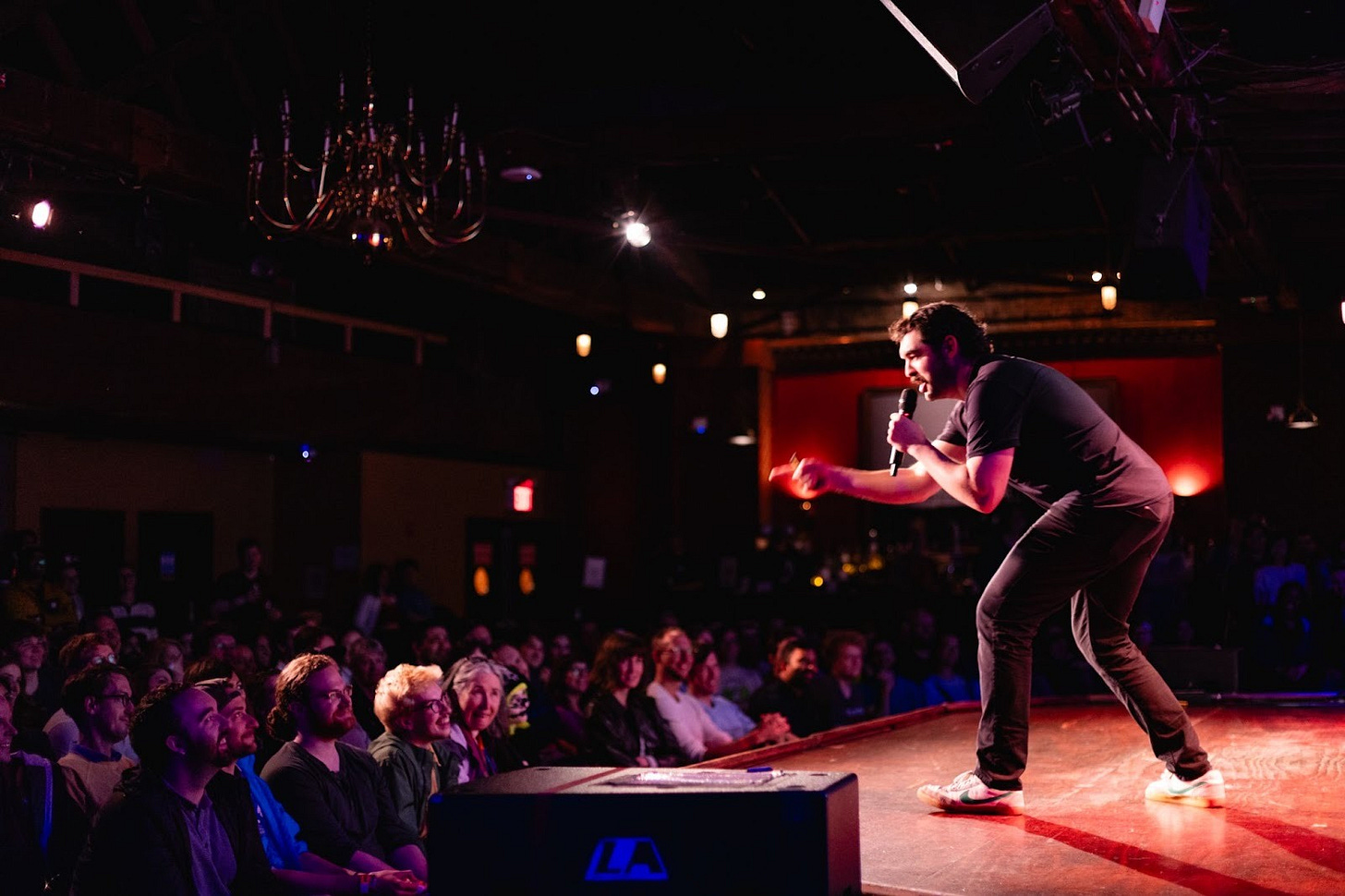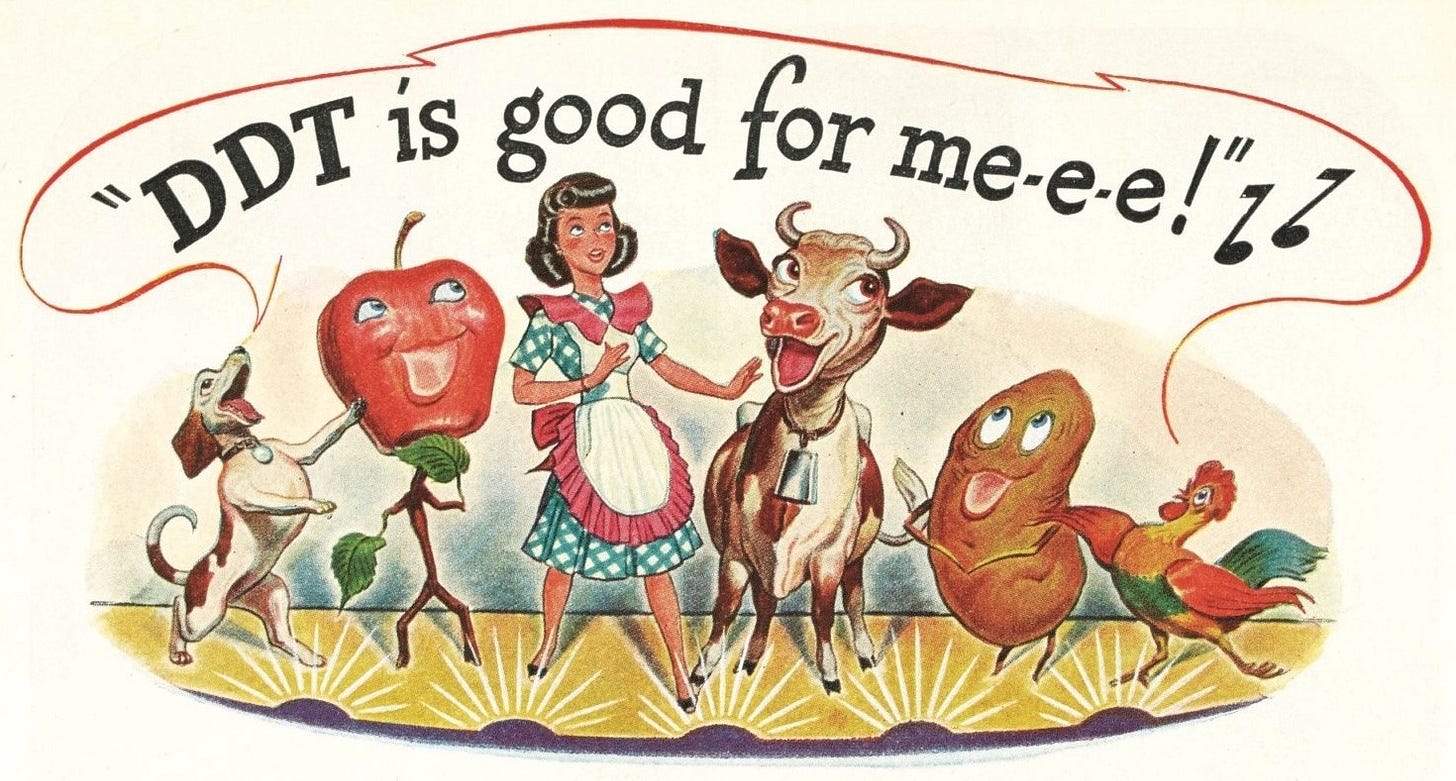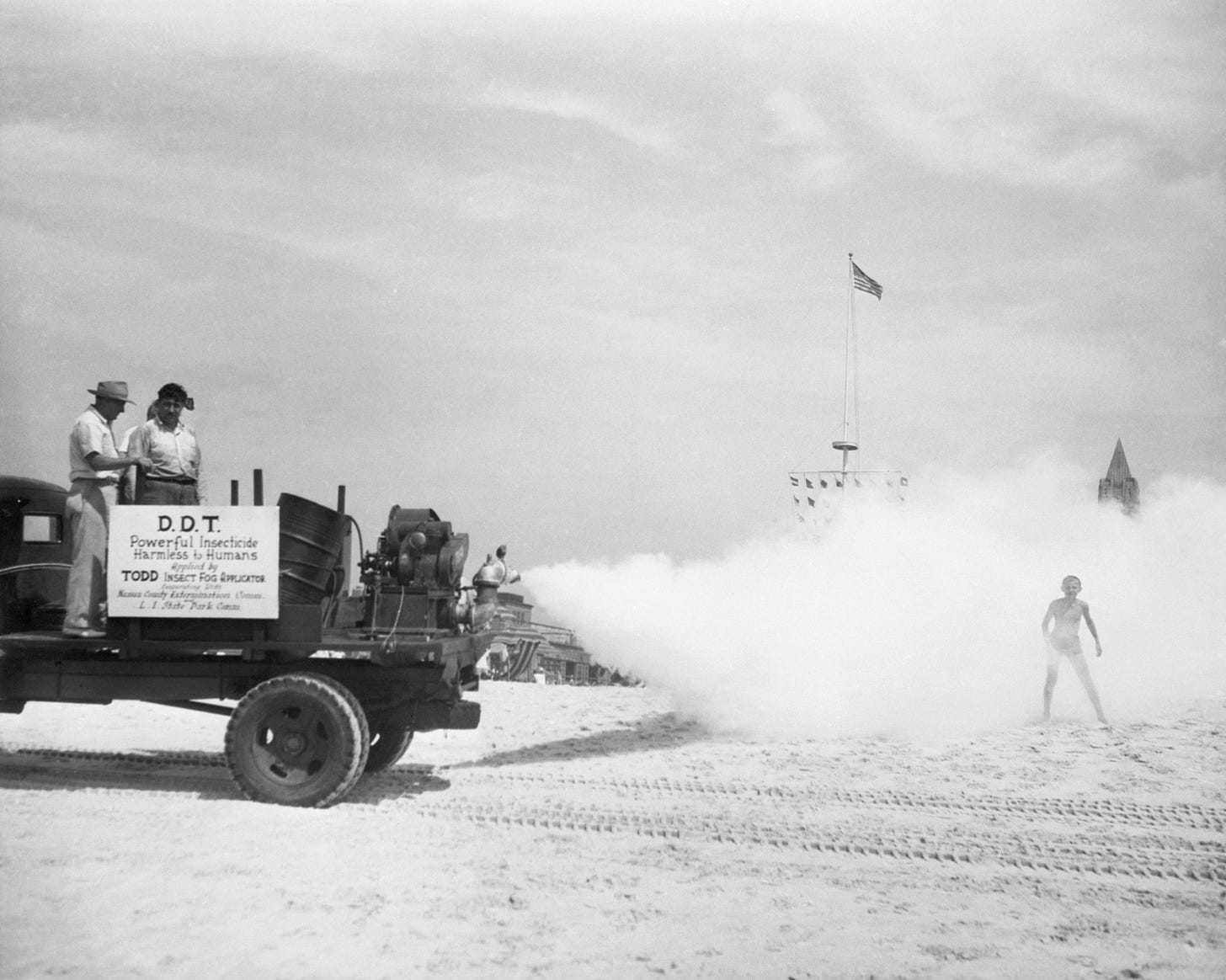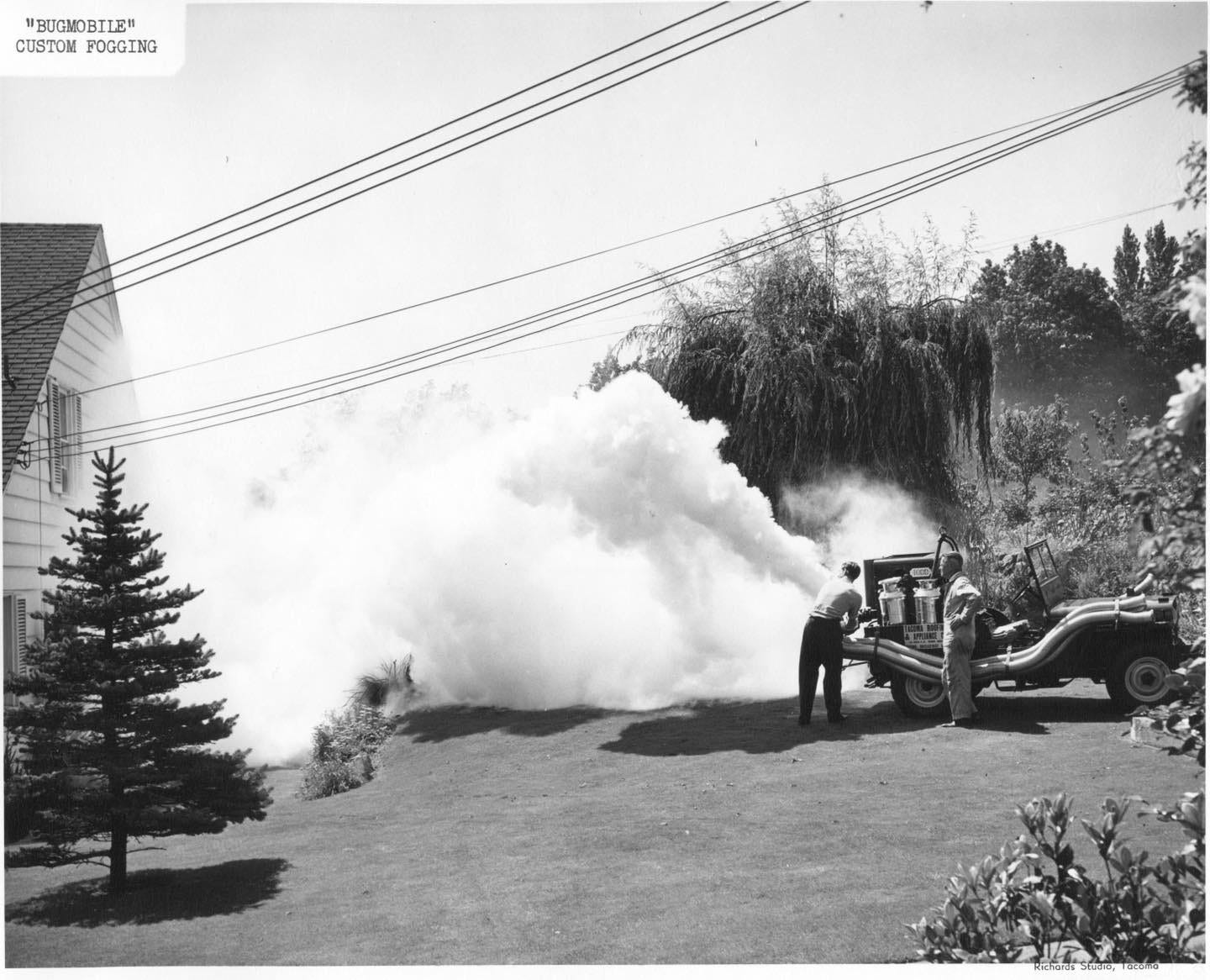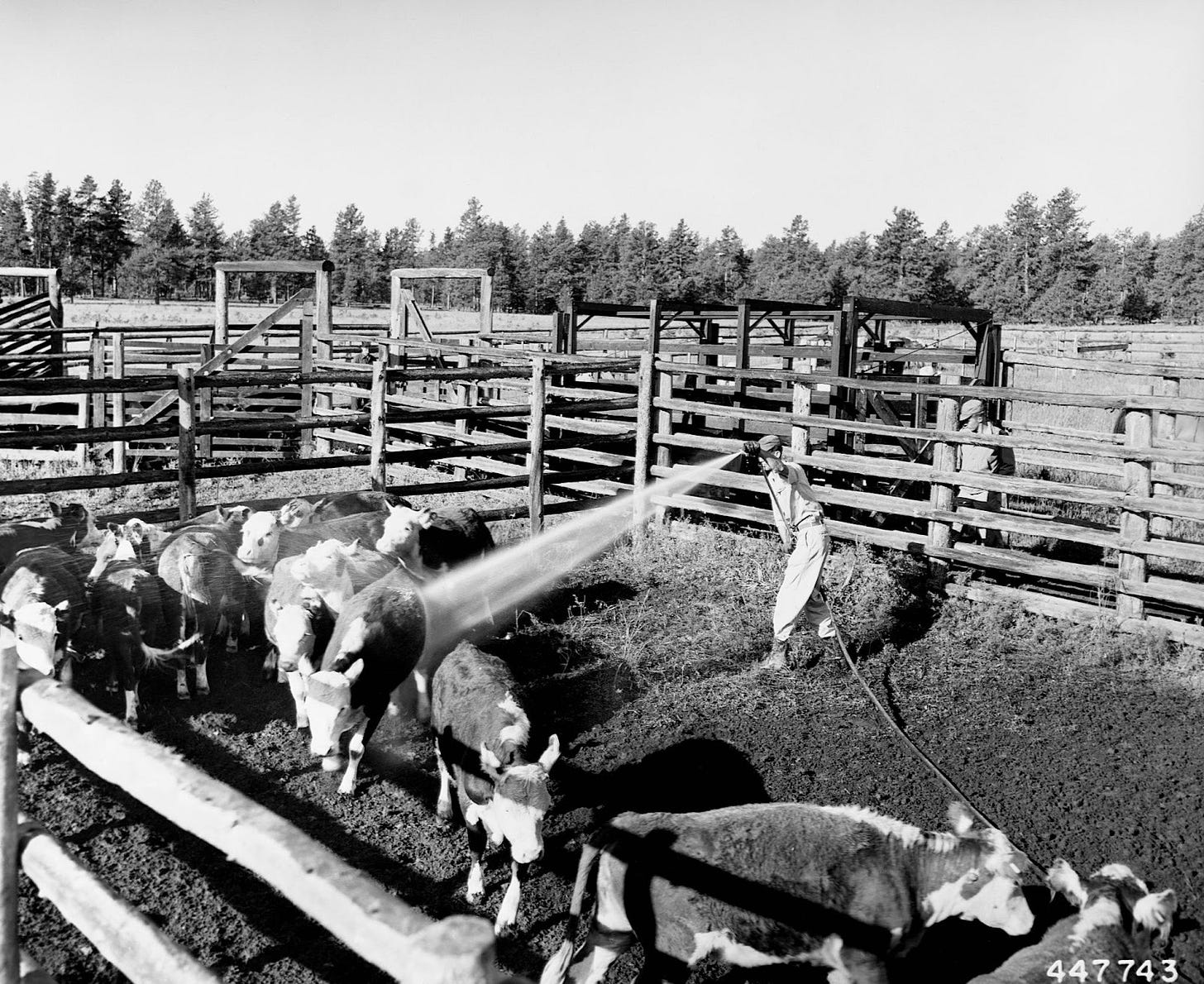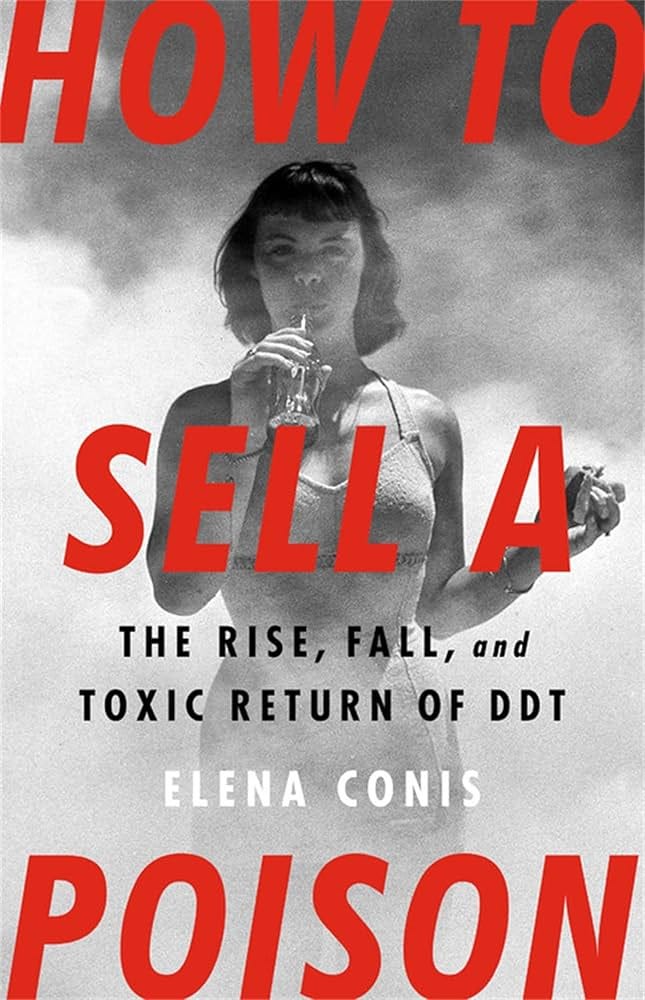Atomic Bomb for Pests
Hello friend,
Before we dive into the war on bugs, we want you to know that:
We’re doing our next live Climate Town Town Hall on November 4th in Brooklyn!
That’s right, we’ll be bringing our niche brand of climate comedy to the Bell House in Brooklyn on Tuesday, November 4th at 7:30PM and you can buy your tickets right here. If you come to this show:
You will see a live version of our next episode before it comes out in mid-November. These live episodes are typically done only one time, and this show is no exception. Writing a full show and then doing it only one time could be considered stupid, almost no one else in comedy does this for a reason. This is why people tour. But it does make our shows a once in a lifetime event.
You will have access to Climate Town shirts that you can only get at live shows. Also, if you previously bought a Climate Town shirt at a live show, this is the only place you can take advantage of our A Lot of Questions Asked return policy.
There will be a public comments period.
And one more time, here’s where you can buy tickets. Thank you.
As always, our unsubscribe button is higher up than an old man’s slacks, let’s scroll:
We love you, lawn
That’s right our latest video covers the #1 irrigated crop in the US:
Lawns.
And if there’s one defining event in the explosive growth of the crew-cut monocultures of grass surrounding millions of homes in America, it’s World War II. Or really the end of World War II.
It went about like this:
Soldiers coming home from the war were offered very cheap home loans as part of the GI bill. Add that to a general desire for mostly white people to find somewhere that’s not a city, but also not out in the middle of nowhere and also has 1,000% more golf, and you get the modern suburbs. But these houses were built so fast, with people moving in right away, that developers found the best options to cover the development scars quickly was a fat slab of juicy grass.
But to get that grass perfectly green, you can’t just let it do its thing. You need to pump it full of nitrogen fertilizer. Which would’ve been a problem, except that we just spent a ton of money building up our bomb-making facilities for the war. And one of the main ingredients of bombs? Nitrogen. So we just took that explosion nitrogen and flipped it on over to EXPLOSIVE GREEN GROWTH FOR YOU AND YOUR LOVED ONES.
You can’t make an omelet without breaking eggs, and you can’t fight a war without using cutting edge technology to murder your opponents. And some of our brightest scientists were tasked with finding new chemicals that could do away with whatever was bothering us. Some were focused on killing people, but others would destroy crops so enemy troops would starve or just eliminate bugs that were spreading disease. But then the war came to a close just as we were wrapping our heads around these new murder chemicals (and how to make them in bulk). So we figured why let these weapons go to waste: we should at least see if this new killing could help us back home. And it turns out lawns were a great testing ground.
From the late 1940s on, your lawn was no longer just an extension of your beautiful and peaceful garden. No friend, you were now in a fight for your life, a fight for what’s good and right, a fight for your lawn.
But luckily for you, there’s one thing you’d never had to worry about again:
Bugs.
That’s right, you’d never have to deal with another ant or fly or mosquito, thanks to quite possibly the most effective WWII chemical revelation.
DDT is good for me-e-e!
For over 60 years after it was first synthesized, dichlorodiphenyltrichloroethane (DDT) was considered a relatively useless chemical. But then in the late 1930s, a Swiss dye company called J.R. Geigy decided to switch its focus to agriculture and pharmaceuticals (part of Geigy would go on to form the modern pharma giant Novartis). And with that switch, a young researcher named Paul Müller was reassigned from tanning agents to the wide world of insecticides.
At that time, many of the most effective insecticides were based around arsenic, like Paris Green. They were wonderful killers of insects, but unfortunately they were also fantastic at taking down people and animals too. It’s arsenic. It’s not good for you. So when they sprayed Paris Green, they also had to tell people to wash and cook their food, so they wouldn’t die from the arsenic. Also some of them had lead. Not great.
Müller spent years trialing hundreds of potential insecticides on flies, before stumbling upon one that was completely different. Müller wrote that DDT:
But it wasn’t just flies. They sprayed DDT on potatoes in Switzerland and knocked back the Colorado potato beetle, preventing a potential famine. And they’d also used it on infestations of lice with wonderful, deadly success. Yeah, it could kill bugs. But best of all, while insects died swift deaths, DDT didn’t affect people and animals the same way.
But this was also the middle of World War II. And with Switzerland maintaining neutrality, Geigy offered the immense potential of DDT to both sides: Germany, as well as the U.S. and Britain. And guess which side embraced the exciting new poison. (Answer: “ɐɔᴉɹǝɯ∀”)
When typhus started to spread (transmitted by lice) in war-torn Naples, the U.S. Army dusted over ONE MILLION people in the brand new miracle chemical. Mosquitos were spreading malaria in the Pacific? Hit that with a blanket of DDT. In case after case, the offending bug was decimated while the people remained completely not dead. And within a couple years, the war was over and DDT was hailed as a national hero, one of the great saviors of the great war.
So when DDT was unleashed on the public back home:
The USA went f*cking nuts for it.
The goal: complete eradication of unwanted bugs. The plan: soak the world in DDT.
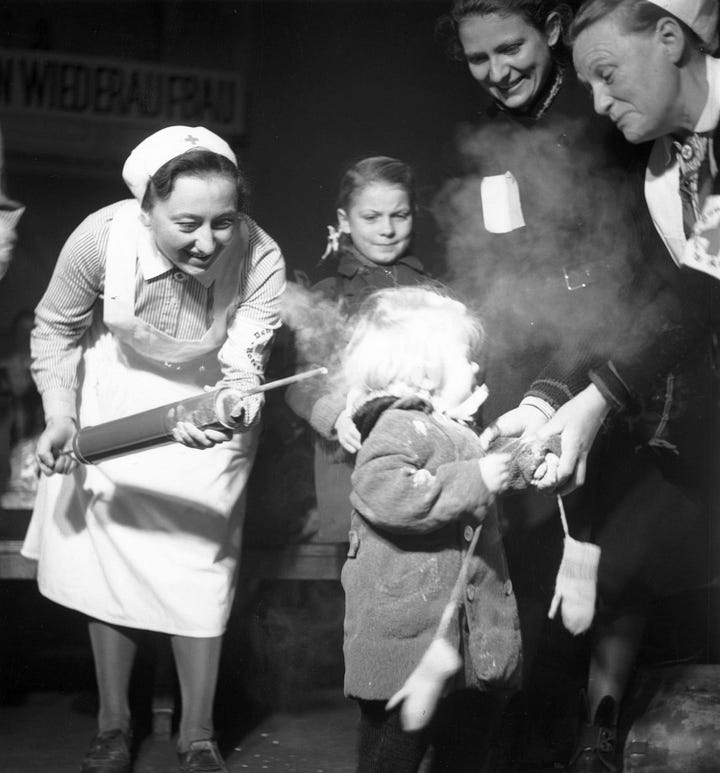
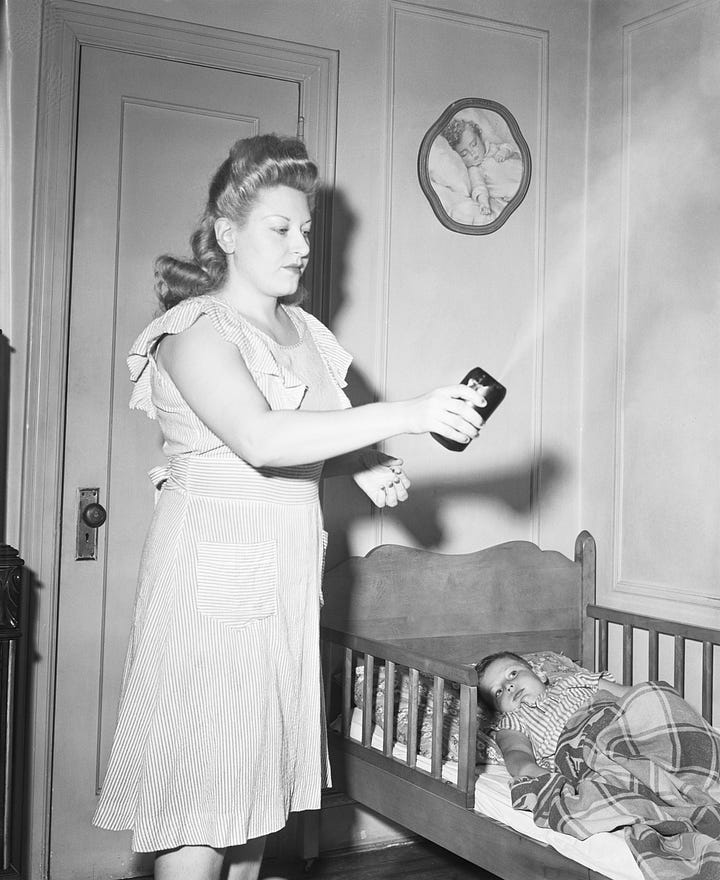
You should spray DDT on your lawn and in the creek and in your bushes. And don’t stop outside, blast down your living room, put it under your couch cushions, powder down the dog, and drop a few pumps on the baby while you’re at it. Can’t get it inside your wallpaper? No problem, there’s now DDT-laced children’s wallpaper.
Here’s a promo from 1946 for paintable DDT that claims “this new insect destroyer contains a lot of DDT, not just a little, its DDT content is even higher than government specifications”:
According to one DDT-obsessed collector:
It also took hold with farmers, and soon they were hosing down cattle before milking them:
There are even stories of advocates eating DDT to show how safe it is, including a U.S. representative for Geigy who apparently ate a chunk of DDT crystal the size of a walnut to prove to the U.S. Surgeon General that it was safe. The Surgeon General then told him:
If you are alive tomorrow, you will be getting a big order from us.
And to be clear, there were definite upsides to the widespread DDT use. By 1951, the U.S. had eliminated malaria from the country, which is one of the most devastating diseases in human history. That abrupt turnaround would have been hard to imagine not long before (there were 100,000 malaria cases in the U.S. in 1935).
DDT was so revered, that Paul Müller even won the Nobel Prize in Physiology or Medicine in 1948 (the next year, they gave the Physiology or Medicine Nobel to this completely terrifying man who popularized lobotomies). And so it was settled that DDT is a miraculous chemical that erases insects while leaving humans and animals completely unharmed.
But actually there was a problem with all that:
DDT does harm humans and animals.
Almost immediately after widespread use began, some people started to worry about the side effects of DDT use. Part of DDT’s incredible effectiveness seemed to come from its ability to destroy the nervous system of insects – they’d absorb DDT through their skin then die from spasms or paralysis.
And while people and animals didn’t have the same immediate reaction at low doses, a lot of people and animals were now aggressively exposed to high concentrations of DDT every day.
According to the great book How to Sell a Poison by Elena Conis, a mysterious virus started to spread through cattle and people in the U.S. in the late 1940s, with a mix of symptoms that couldn’t be easily explained. But when a Manhattan physician named Morton Biskind started to suspect DDT exposure, he found a surprising overlap with DDT toxicity described in medical journals:
And just to say it one more time, Elena Conis wrote a fantastic book on DDT that just came out a few years ago. We highly recommend it, and we pulled from it a lot for this newsletter.
But despite growing worries, we kept blasting DDT all over the country through the 1950s. And as we did, evidence of problems continued to grow. It turns out DDT concentrates in fat, which means that milk, butter, and other dairy products would carry DDT above legal limits to consumers – this also meant that mothers could pass DDT onto babies through breastmilk. And DDT would also accumulate in fatty organs and body fat, releasing in higher concentration when that fat is burned.
After more than a decade of rising public concern from many (mostly ignored) people, a marine biologist and writer named Rachel Carson turned her attention to the cause, and released the book that many credit with launching the modern environmental movement:
Silent Spring.
Carson detailed the brutal consequences of soaking our country in DDT solution, in a book that took her 4 years to write, while simultaneously battling breast cancer.
But if you know large chemical companies, you know that they really didn’t care for that information getting publicized.
And while Silent Spring changed the public’s perception of pesticide safety, it took a full decade for the U.S. to act – in 1972, the newly formed EPA:
Banned DDT use in the U.S.
And while that was a significant victory for the environmental movement, the decision came late enough that the most vocal defenders seemed to have already backed away:
DDT use in the U.S. had already dropped off sharply, falling from 79 million pounds in 1959 to around 12 million pounds in 1970.
There were also major concerns that liberally dusting our country with DDT had given rise to DDT-resistant mosquitos and other insects - and since DDT hangs around in the environment for so long, those resistant bugs had no competition to stop their spread.
DDT was essentially public domain, so the market had been flooded decades before – after Silent Spring came out and public sentiment shifted, many of the companies decided their days of DDT profit were over and stopped making it. By 1972, there was a single company making all our DDT (down from six when Silent Spring came out).
The EPA ban also allows DDT to be used for cases where there was no clear alternative – and it could be used for a malaria outbreak or other public health crisis.
And the battle over DDT mostly quieted down for a couple decades, until a surprise uprising from a completely uninvolved party:
The tobacco industry.
Had tobacco companies started producing DDT? Or maybe they wanted to spray it on tobacco crop? Perhaps the children might enjoy a puff off this new mentholated DDT cigarette?
Sorry, dear reader, but no to all three of those. Three fake questions. Ah yes we knew they were fake from the beginning and yet we let you believe. But we’re done with the misdirection now, because the tobacco industry started championing DDT for a much simpler, much more insidious reason:
Get more people to doubt science.
And let’s give it back to the wonderful Elena Conis, this time in an interview in Civil Eats:
A wave of op-eds and articles flowed from tobacco industry-funded sources like The Advancement of Sound Science Coalition (TASSC), focused on the potential malaria outbreaks that could’ve been prevented by continued, widespread DDT use.
And here’s a final quote to bring us on back home:
That these assertions are easily disproved is beside the point. The purpose of the campaign was not to rehabilitate DDT, which actually is only banned in the US. The goal was to undermine confidence in government regulation in general by convincing people that regulation of DDT was disastrous. As Naomi Oreskes and Erik M. Conway have shown in their book Merchants of Doubt: How a Handful of Scientists Obscured the Truth on Issues from Tobacco Smoke to Global Warming, corporations have used methods developed to counter the science of smoking and health to spread doubt about science and regulation in connection with DDT, acid rain, ozone depletion, and global warming.
Official Rollie (no prize)
If you’re reading this AND November 4th, 2025 is still in the future AND you live in New York City … congratulations, that means there’s still time to vote for mayor (Nov. 4th is Election Day).
For this edition, you can become an Official Rollie (no prize) by sending us proof that you voted in the NYC mayoral election. It could be a photo, it could be something else – it’s probably an emailed photo, but we don’t want to limit you.
And for those of you who don’t live in NYC: we don’t know exactly which election is happening near you (if any), but you’re welcome to also send evidence of you voting between now and November 4th for consideration. We will review each submission carefully. There is no prize.
As for last edition, here are your Official Rollie (no prize) recipients, who valiantly displayed their knowledge of snooker:
Jay Speights
Marten [Redacted]
And an honorable mention for Amanda Thoren, who was wrong, but for the right reasons.
How about that, friend?
Well that’s the end of the newsletter. If you want to send in a question, all you have to do is respond to this email. Or contact us directly at newsletter@climatetown.tv. We may never answer it, but you never know.
Also, if you think you found a mistake, let us know. We try our very best to research and review our way to full accuracy, but it’s a big world out there.
Edited by: Caroline Schaper
Legal support from: The Civil Liberties Defense Center
Executive produced by: Matt Nelsen and Rollie Williams



